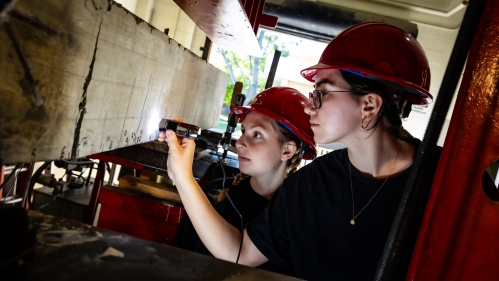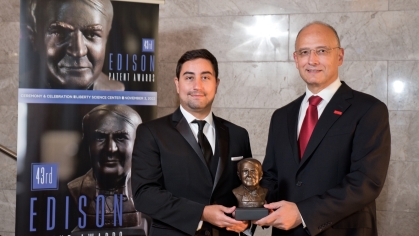Helping Bridges Withstand Climate Change

Climate change poses a potentially devastating threat to the nation’s bridges, with a PLOS
ONE article recently predicting the collapse of one in four US bridges as a result of extreme
temperatures by 2050. This summer – Earth’s hottest ever – heat waves blanketed the tri-
state area, wreaking havoc on New York City’s Third Avenue Bridge by keeping it stuck in
open position on a particularly hot August day.
Nenad Gucunski, a professor and chair of the School of Engineering Department of Civil and
Environmental Engineering (CEE) explains the effect climate change’s extreme
temperatures have on bridges this way: “Structures deform under temperatures, which can
induce additional stresses in structural elements. How high stresses are induced, and
which bridge components will be affected mostly depends on the type of structure and the
temperature change.”
Such structural deformation from extreme heat and cold could accelerate aging and
compromise bridge safety and stability.
Identifying Structural Vulnerabilities
CEE colleague Husam Najm elaborates, “Typically movable bridges and long span bridges
are more vulnerable. Movable bridges can be vulnerable because they have
mechanical/electrical systems that can be sensitive to expansion and contraction.”
According to Najm, extreme fluctuations of heat or cold can cause a multitude of problems.
Malfunctioning live bearings and locking bars may not function properly on movable, or
bascule, bridges, while long span bridges can expand during extreme temperatures.
“If the bearings weren’t designed to allow for this large expansion, problems may arise,
such as the buckling of the bridge’s median barrier, safety parapets, and guardrails, or
damage to the bearings themselves,” he says.
Seeking Solutions
Bridge safety is paramount for Rutgers engineers. SoE’s BEAST facility is a cutting-edge
laboratory that simulates the deterioration of bridges by imposing environmental stresses
on bridge sections. “The BEAST,” says Najm “can test bridge stresses under temperatures
between 0 and 100 degrees.”
Gucunski notes that while current codes already take temperature loads into account, they
need to be adjusted as the climate changes. “I am confident that the technical committees
responsible for those are doing it,” he asserts.
According to Najm, while bridge codes and state Departments of Transportation account
for extreme temperatures, bridge designers should be able to design bridges whose
bearings could accommodate larger movements without being damaged, and absorb larger
movements without malfunctioning. On-site inspections during or after extreme
temperature events can also help to avoid problems.
“Additionally, installing sensors that measure and monitor bridge movements can alert
bridge officials to potential problems,” he says.
The good news is that recently erected long-span bridges in the area, such as the Goethals
Bridge and the Mario Cuomo Bridge are typically built to last for at least a century. “I would
expect they are designed to withstand extreme events such as flooding, earthquakes and
extreme temperatures” says Najm.


